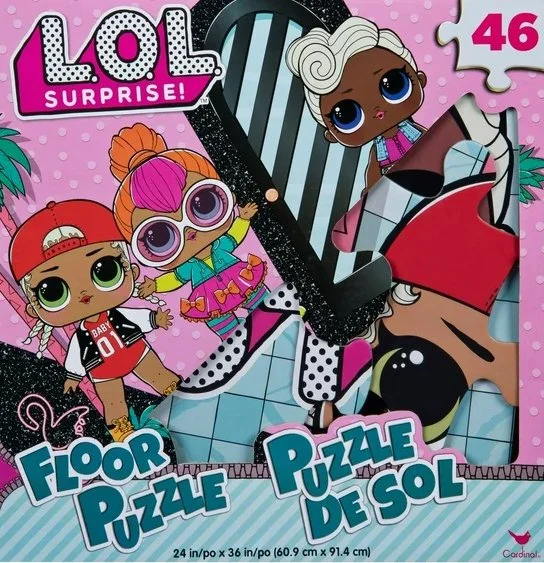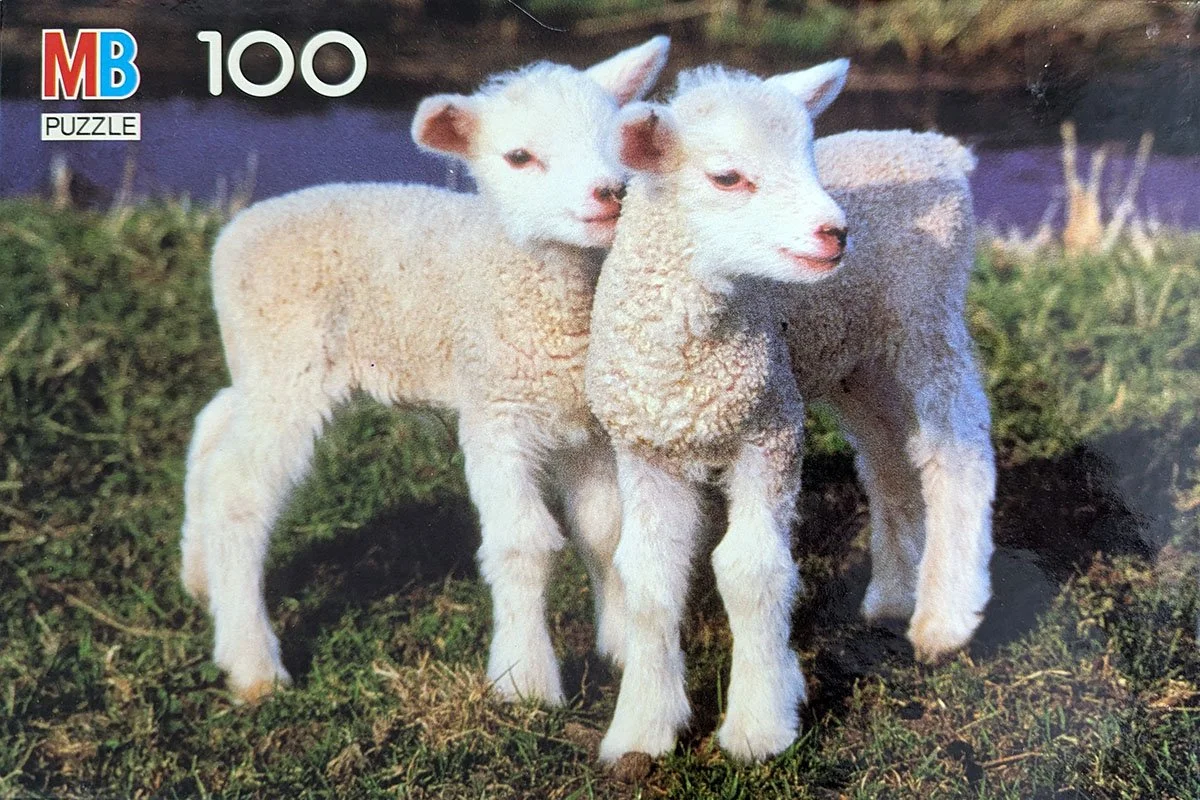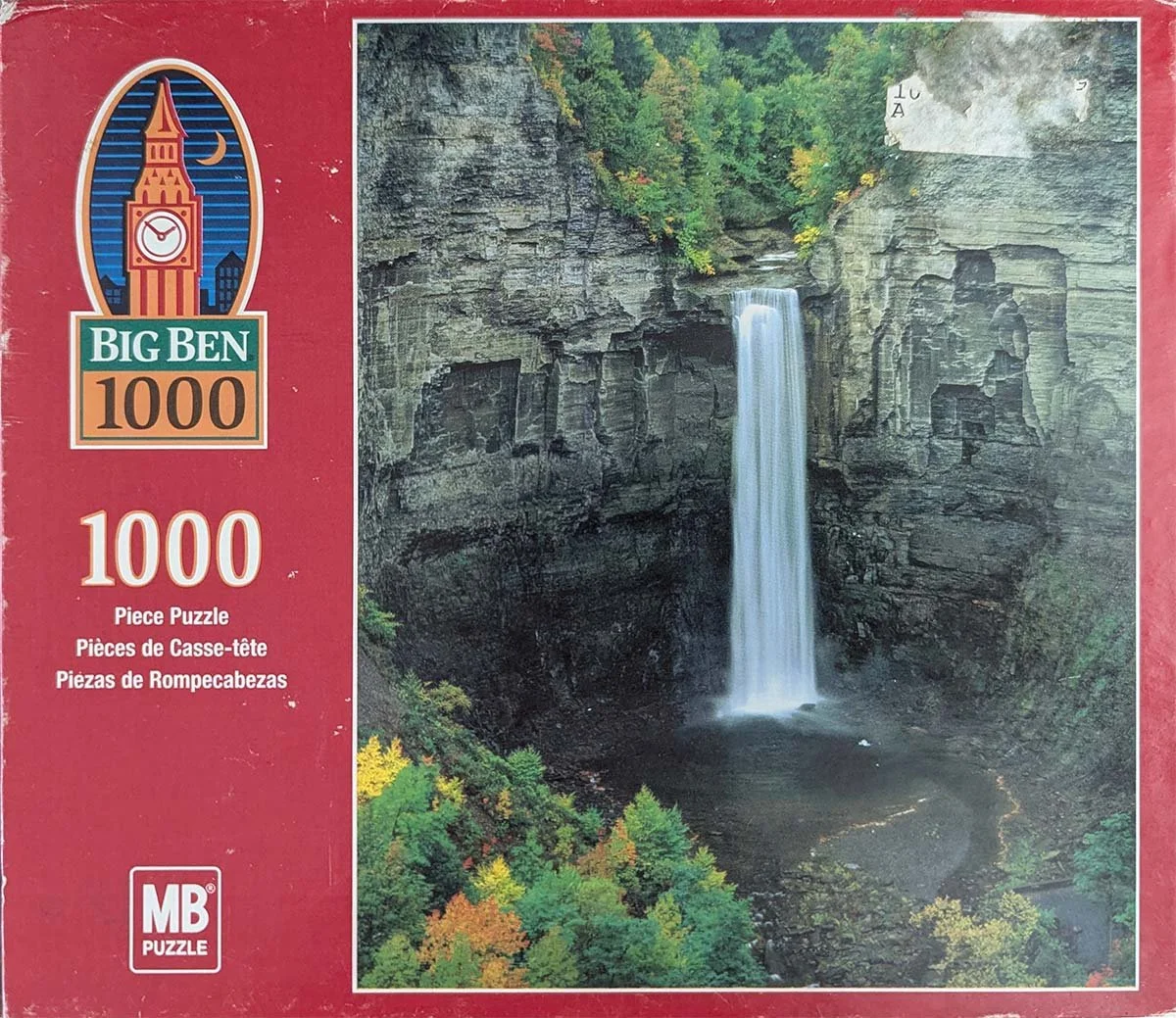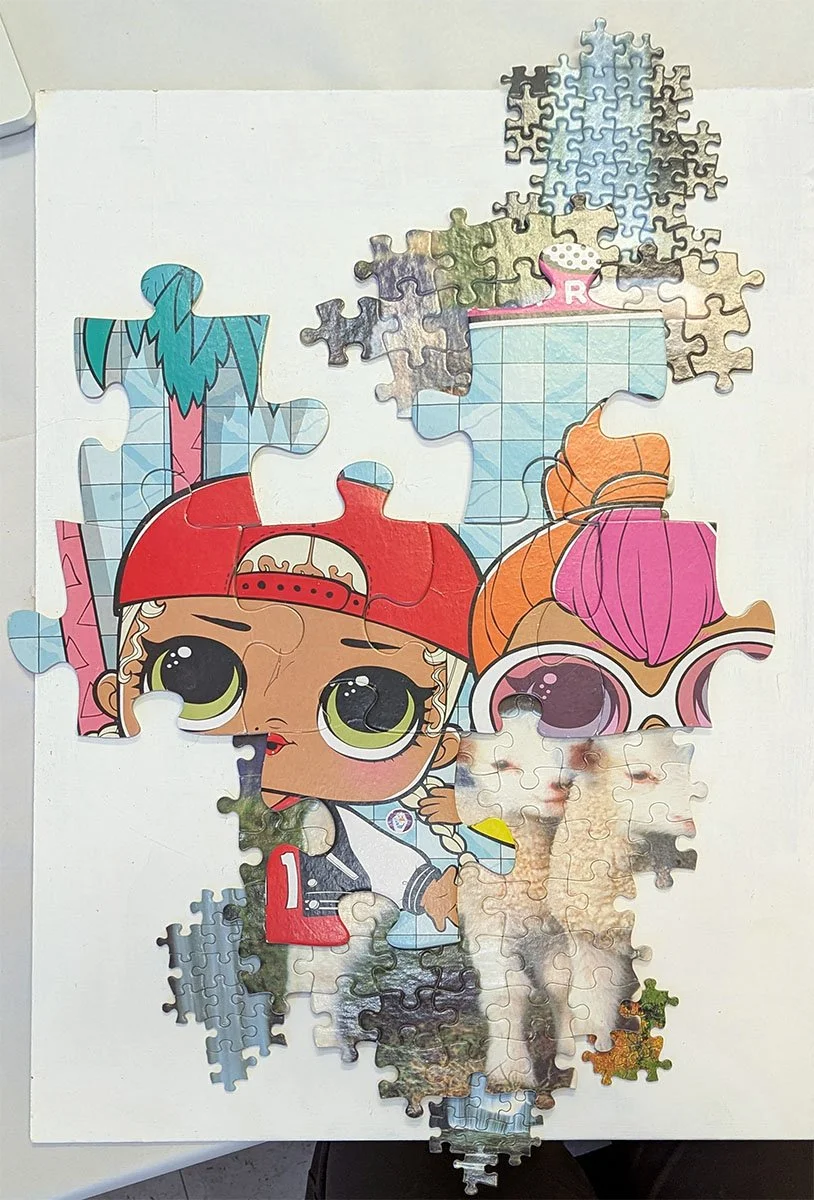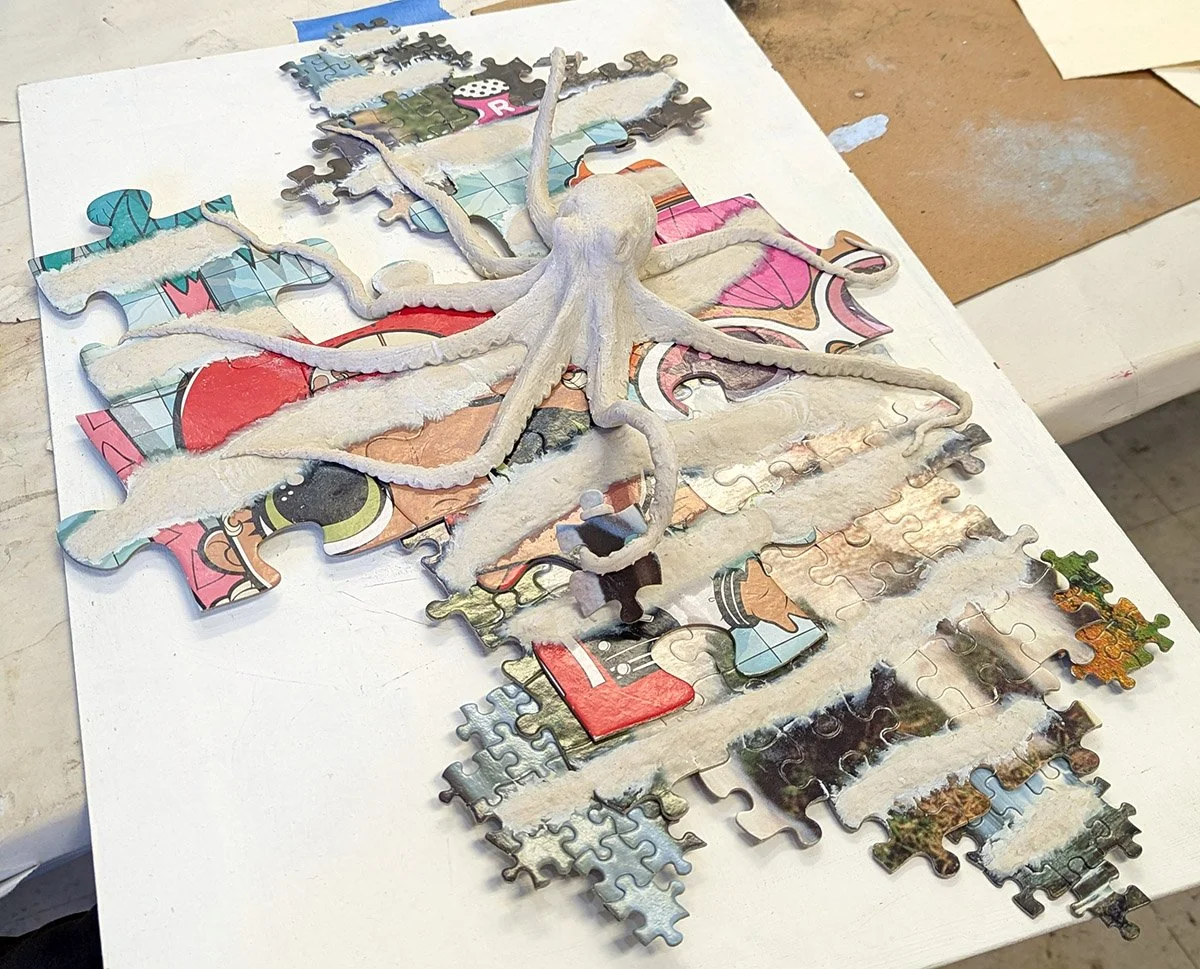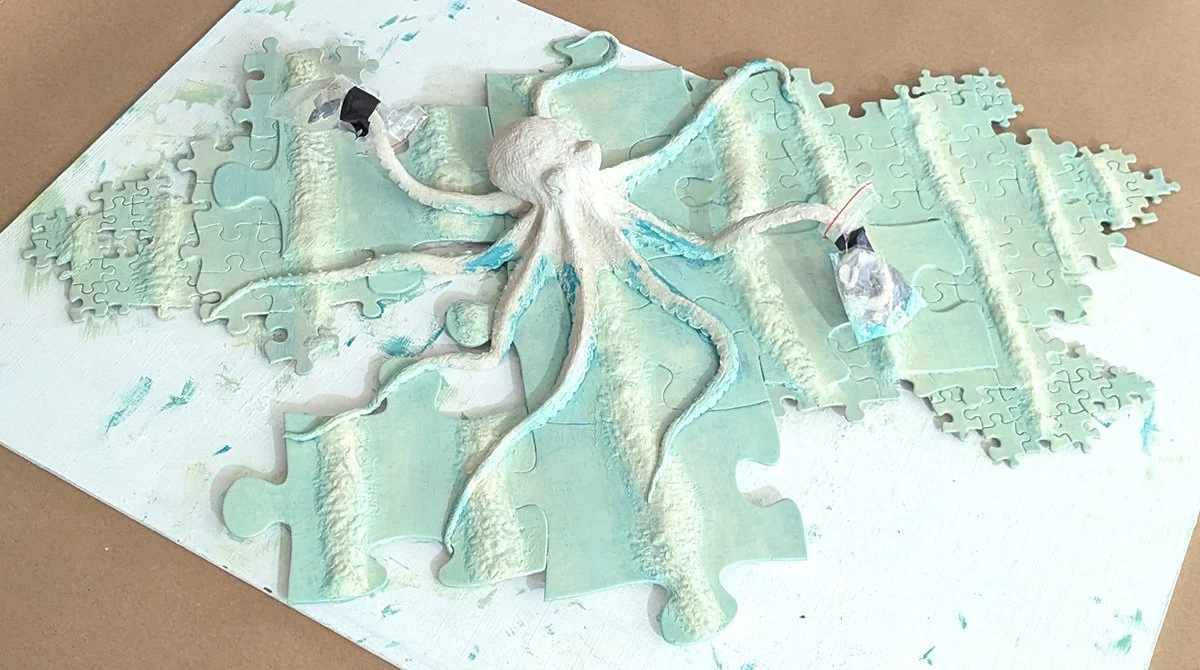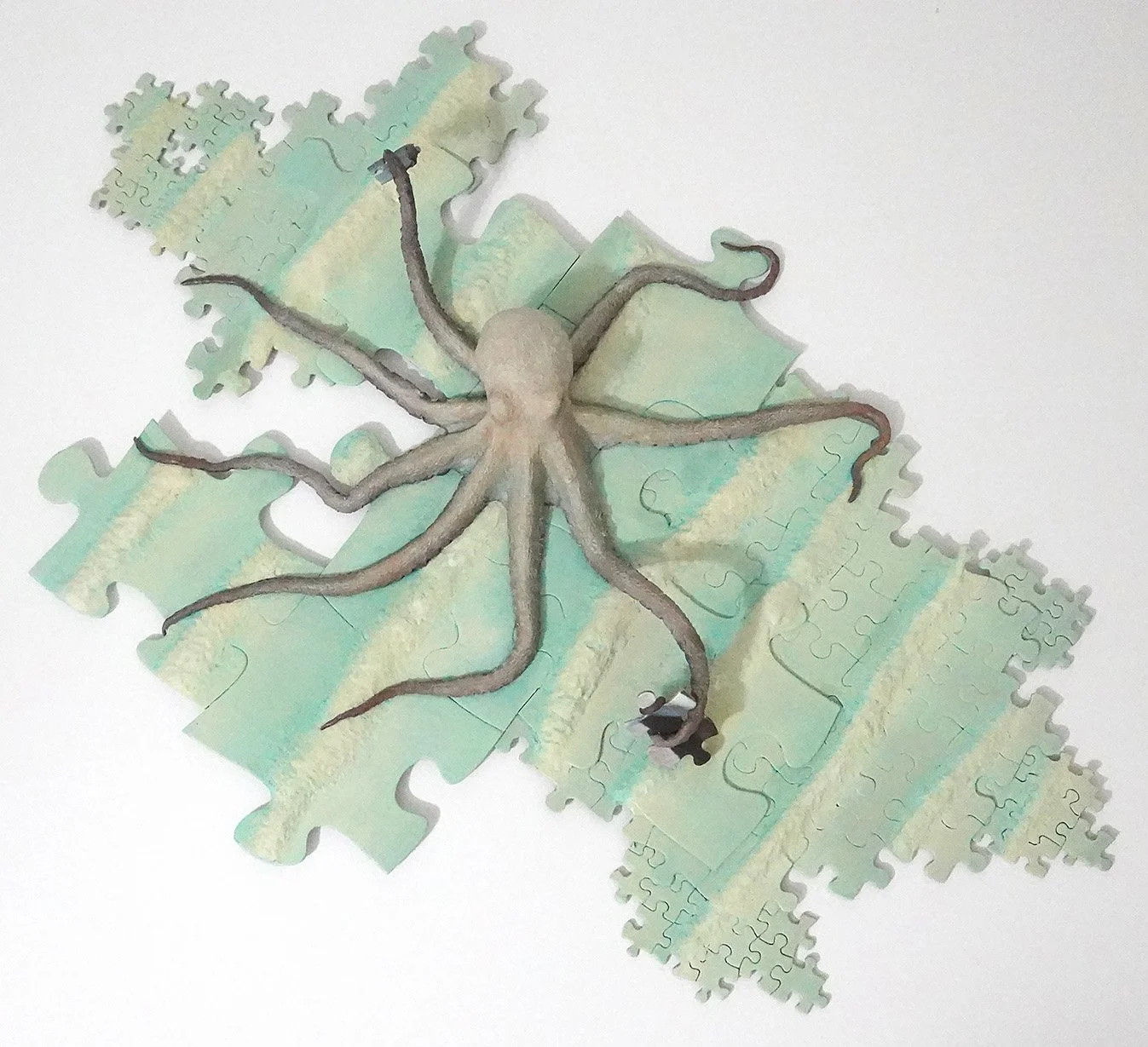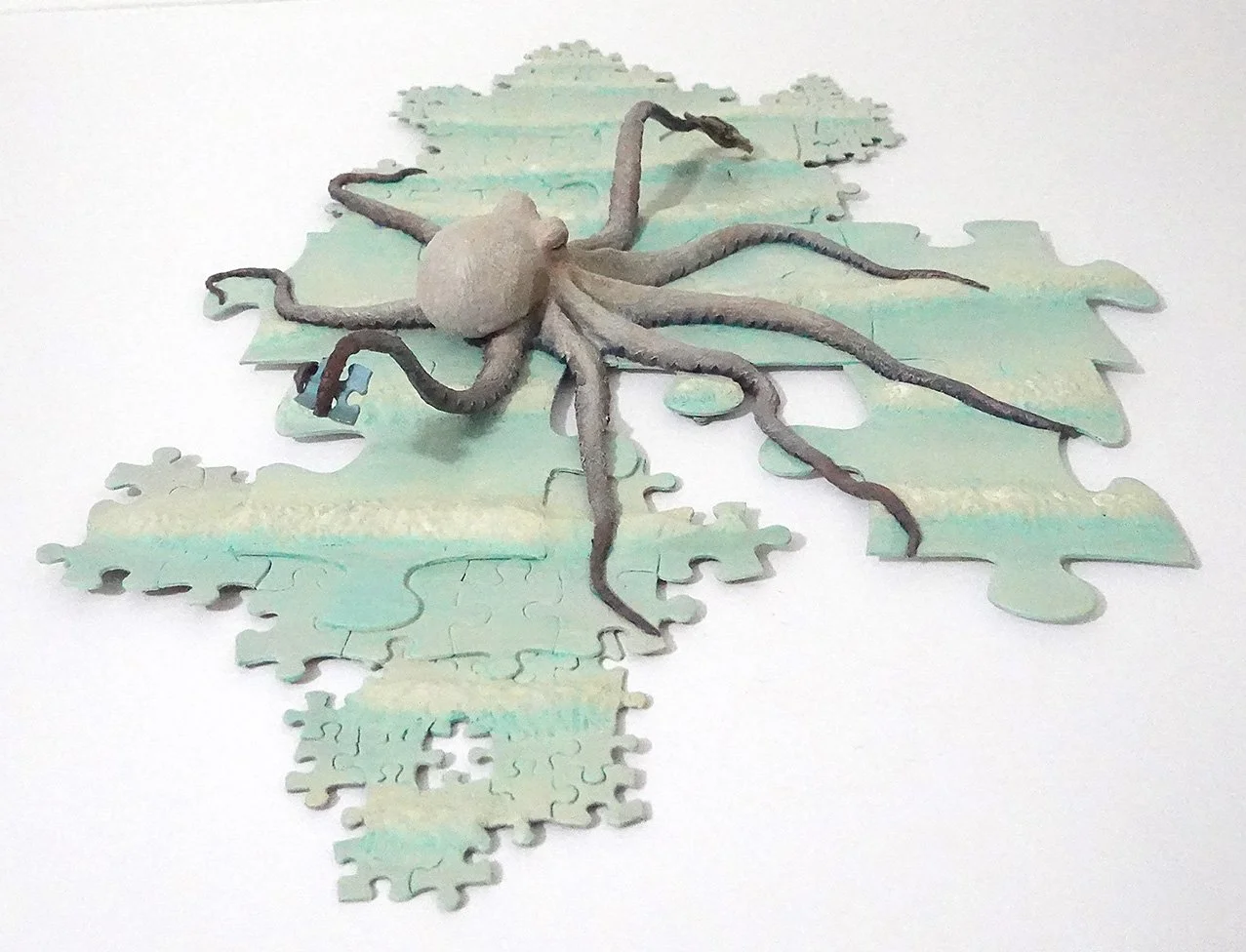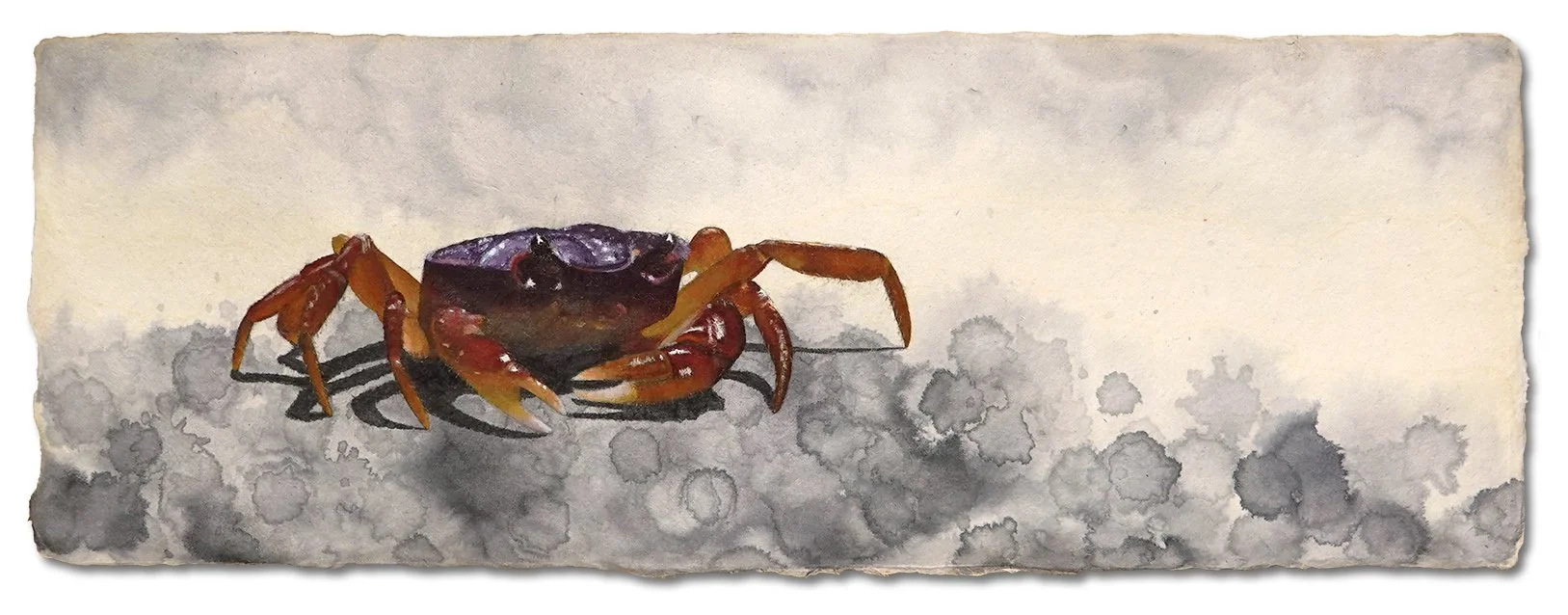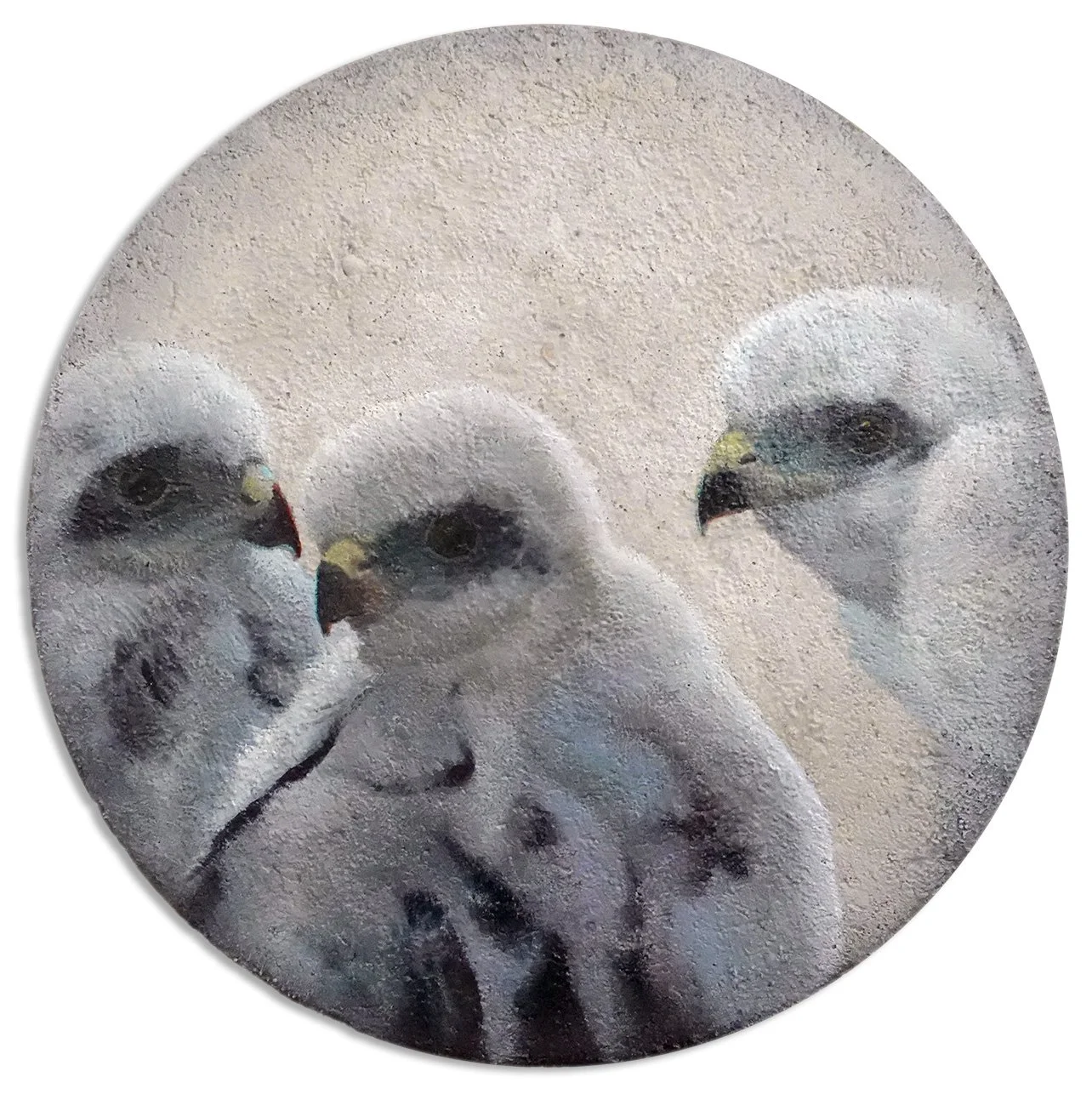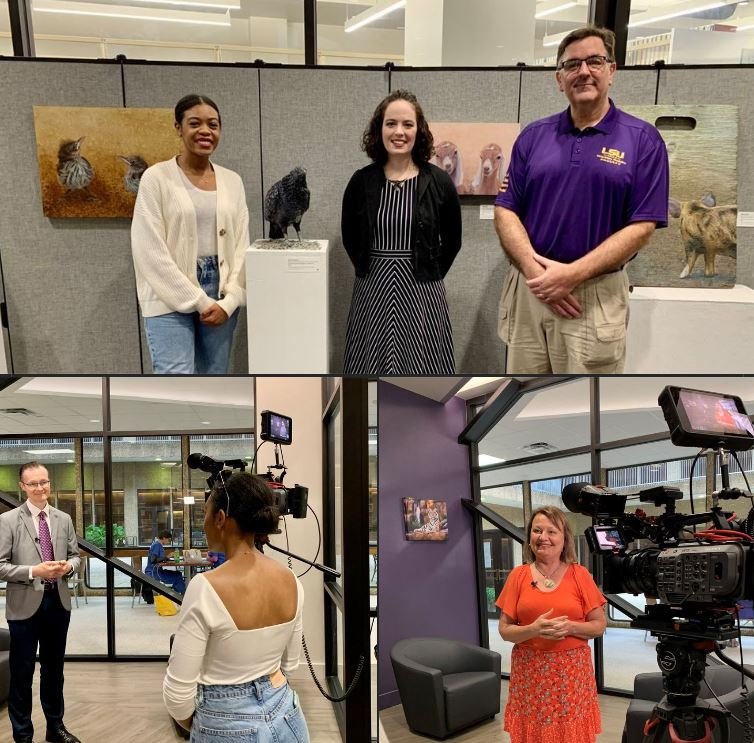Once again interrupting my Japanese posts to remind you that the invitational You Want a Piece of Me? exhibition which I previously posted about here ends on August 17, 2025, so due to the gallery’s open hours you have two more dates left in which to stop by! I’ll get more into that below, but first, let’s do a deep dive into what I did.
This show asked artists to create art using a jigsaw puzzle, or puzzle pieces, as part of the art - and to leave at least some portion of original puzzle visible. You may recall that last year we did a similar challenge using board games, and here is what I did for that Advance to Gogh show in 2024!
For You Want a Piece of Me?, I needed to recycle puzzles - but I don’t own any, so I stopped by a thrift store and perused their offerings. I ended up buying three puzzles, mostly based on the differing scale of the pieces. I hadn’t decided what to do yet, but I figured owning these puzzles was a good first step. They were, in order of scale: L.O.L.Surprise! Floor Puzzle [large pieces], Milton Bradley lambs puzzle [medium pieces, 1 original piece held in an octopus tentacle], Milton Bradley Big Ben waterfall puzzle [small pieces, 1 original piece held in an octopus tentacle].
I pondered what I wanted to do with them for some time, as I wanted to make something that was still my own but that also satisfied the challenge parameters. I eventually decided I’d make a sort of topography out of the puzzles. This required actually building them, which for the 1000 piece puzzle took far longer than I wanted it to; I ended up building the other two easily but only assembling a few sections of the Milton Bradley Big Ben waterfall puzzle until I had enough connected material to satisfy my needs.
Then I built up a patchwork foundation, purposefully rejecting any edge pieces as I wanted the sculpture to communicate growth potential along its full border. After I glued it together and somewhat leveled its base, I then sculpted an octopus atop it. I formed the octopus out of QCC, clutching a mid-sized puzzle piece in one of its tentacles and a small piece in another. I also added some sand ridges. After curing, I painted the whole sculpture! Here are some progress pictures:
And here’s the finished piece! This is Construct, acrylic, QuickCure Clay, glue, and puzzle pieces, 16x25.67x3.25", 2025.
If you want to see Construct and the other Gallery 103 You Want a Piece of Me? entries in person, you can stop by either tomorrow (Saturday, August 9th) or next Saturday, August 16th between 10am and 1pm. Gallery 103 is located on the ground floor of the Ho-Chunk Centre located at 600 4th St, Sioux City, IA 51101.
